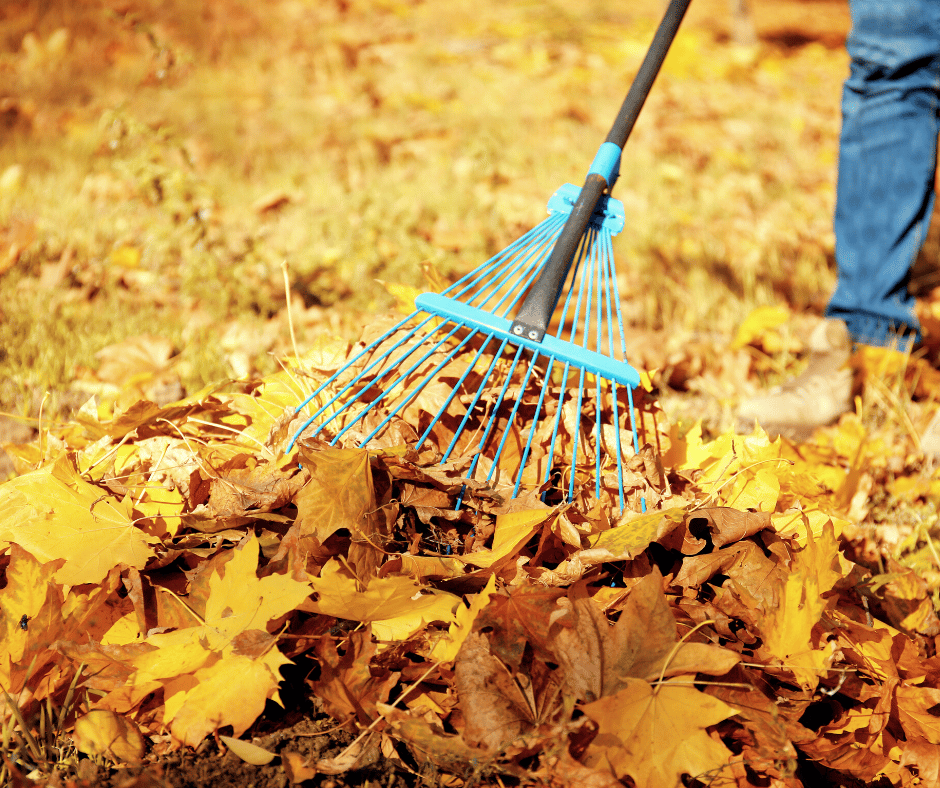It’s hard to believe we’re already more than half way through October and well on our way into November. The leaves are changing and falling, the temperatures are dropping and we all know what is coming around the corner. With the transition of seasons, many are hard at work with harvest, or raking leaves, and other various outdoor projects. And in the winter many are busy scooping and shoveling inches of snow, sometimes even slipping or falling on the ice. During these times of the year, I tend to see an increased frequency of lower back injuries due to overuse, improper biomechanics, and falls. In this blog, we’re going to address a few ways to help avoid those injuries and address when it’s appropriate to use heat or ice for an injury to ensure a quicker recovery.

Let’s discuss proper techniques for raking leaves and shoveling snow. When doing these particular tasks, avoid bending forward at the waist as this puts extra strain and pressure on the low back. Rather, bend at your knees, and lift with your legs.
When raking, avoid excessive turning or twisting. Rather, have your body parallel to the rake and alternate sides you are holding the rake in as well as alternating the direction of the raking.
When shoveling snow, it is better to push the snow straight out in front of you, using all of your weight to help you push and protect the low back. If this isn’t feasible, then you should bend your knees, scoop, then stand up with your legs, and finally empty the shovel. When you stand up, it’s also important to activate or “turn on” your glute muscles and the core muscles. To do this, simply tighten or squeeze those muscle groups before standing. By doing this, the glute and core muscles take some of the heavy load off the back and protects you from injury. Now, when emptying the snow from the shovel, do not twist and throw it, but rather stand up, turn your body so you are parallel to the shovel and not angled, and dump the snow.
The spine is at an increased risk for injury when we are bent over improperly or leaning more to one side. This can cause irritation to the discs, nerves, facet joints, muscles and ligaments leading to a low back injury or a sprain/strain injury. With proper lifting techniques and ergonomics during these seasonal tasks, you are greatly reducing the risk for injury.
What if you unfortunately do obtain an injury and are not sure what to do about it at home? Do you apply ice or heat? This is a common question! Here are a few tips for knowing when to apply ice and when to apply heat.
Ice is best for acute injuries, or “new” injuries. Ice helps reduce inflammation, swelling and pain. It should be used right after a new injury occurs and is great for low back strains and sprains, sciatic pain, slips or falls. So, when in doubt, use ice! Typically the body responds best to ice when applied within 48-72 hours of the injury. When using ice, it is important to have a barrier between the ice pack and your skin. Do not apply it directly to the skin, as this could cause damage to the skin and it may become frostbitten. Rather, wrap the ice pack in a towel and apply to the area for 10-20 minutes, hourly if needed, otherwise 2-3x per day.
Heat is best for chronic injuries, recurring injuries, and arthritis. Heat promotes muscle relaxation, increases blood flow to the area providing oxygen and nutrients to promote healing, alleviates pain and increases range of motion. Heat is best used for joint pain and tight or sore muscles. Apply to the painful area in cycles of 20 minutes, hourly if needed. It’s important to discontinue if the skin becomes painful, inflamed or swollen. Always wait 48-72 hours after the injury before considering heat therapy. Again, when in doubt, use ice! When applying heat you can use various sources such as a warm water bottle, a heating pad, a hot shower, a warm bath or hot tub. Avoid laying on the heating pack to avoid falling asleep and potentially burning yourself. Do not use heat if you have reduced sensation or lack of sensation in the affected region. Heat is great for tight muscles, tension headaches, stiff joints, and other chronic conditions.
I hope you found this blog on preventing low back injuries this season and when to use ice vs. heat informative and helpful. If you find yourself in need of Chiropractic care, call 507-831-0670 to schedule an appointment with Wellness & Vitality Chiropractic, open Monday-Wednesday and Fridays at Windom Area Health Outreach.
In Health,
Dr. Kylie J. Norell, D.C.
